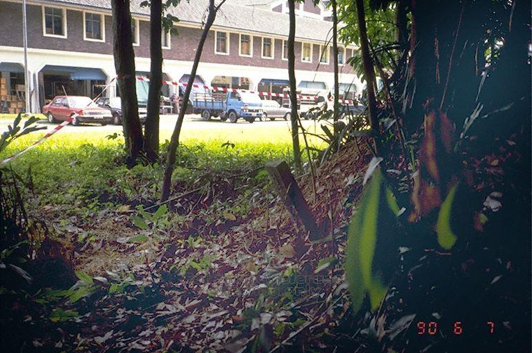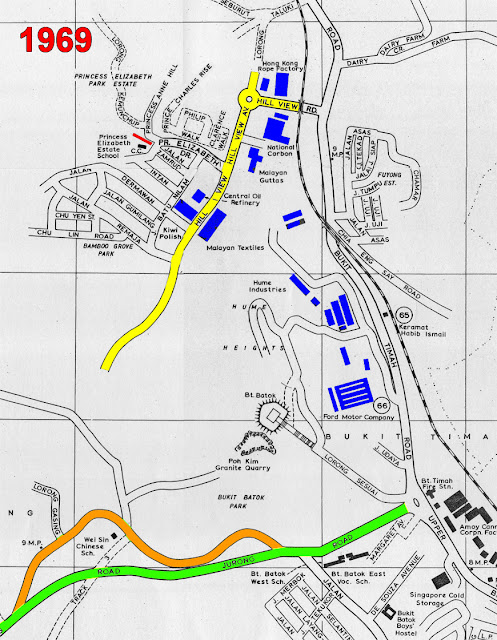 |
| The exhumed grave memorials to the Japanese soldiers. |
This was at the edge of an untouched forest area beside St Mary's Church and the discovery created quite a stir and lots of speculations. It was believed to be the grave of a Japanese soldier ( a corporal Esaki Ujiro, according to the Kanji inscription) from World War II. Bukit Batok was an area that saw some of the biggest firefights in the battle for Singapore.
On the night of Feb 10 1942 and the early morning of the 11th (the day the Japanese captured Bukit Timah Village), the hill where the Japanese corporal was later buried was the high ground being defended by the Special Reserve Battalion, formed by the Australian 8th Div A.I.F.
The hill, beside Jurong Road, was directly in the path of the Japanese Army heading towards Bukit Timah Village.
This unit had fallen back from the Kranji-Jurong Defence Line at Bulim and was defending the hill, together with the 15th Indian Brigade at Bukit Batok.
As the encroaching Imperial Japanese Army was coming down Jurong Road, the SR Battalion together with the 15th Indian Brigade, planned to withdraw south towards Ulu Pandan.
Just before the withdrawal started, the Special Reserve Battalion did a charge at the Japanese soldiers at the bottom of this hill, succeeding in killing many and forcing the Japanese to retreat backwards while the Allied units made their withdrawal.
Perhaps, Corporal Esaki was one of those killed during this charge?
During further clearing of the site, another Japanese war memorial belonging to 2lt Fujinosuke Tomita was also discovered nearby.
The graves of Corporal Esaki and 2lt Fujinosuke were exhumed and the memorial stones were later handed over to the Japanese Embassy in Singapore.
Today, Bukit Batok HDB apartment Blk 287 now sits over the spot where the old graves were lying.


















































